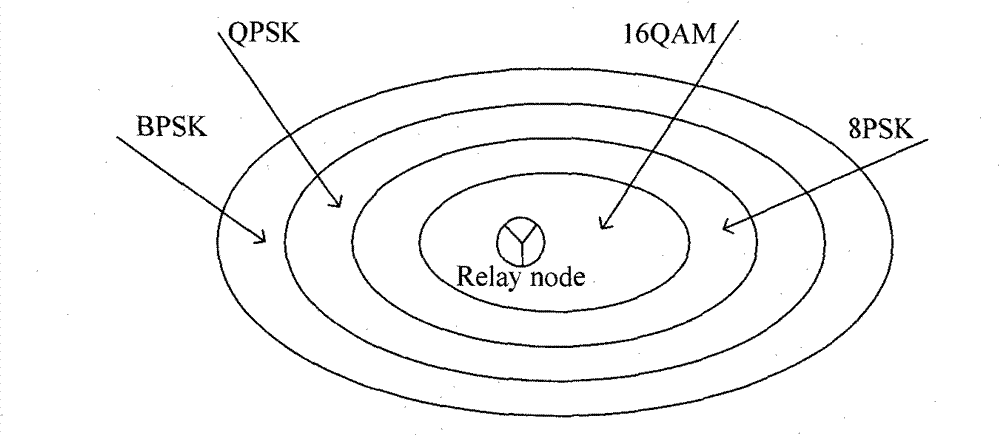Transmission method combined with network coding and channel decoding based on adaptive modulation
An adaptive modulation and joint network technology, applied in the field of wireless transmission, can solve the problems of reducing system capacity, wasting spectrum resources, increasing transmission power, etc., and achieve the effects of improving information transmission rate, high spectrum utilization rate, and multi-diversity gain.
- Summary
- Abstract
- Description
- Claims
- Application Information
AI Technical Summary
Problems solved by technology
Method used
Image
Examples
Embodiment Construction
[0021] Hereinafter, preferred embodiments of the present invention will be described in detail with reference to the accompanying drawings.
[0022] Such as figure 1 As shown, it is the system transmission model of the transmission method based on joint network coding and channel decoding based on adaptive modulation of the present invention, including two mobile source nodes n 1 , n 3 , and the relay node n 2 .
[0023] 1) source node n 1 and source node n 3 Respectively for the data packet S to be sent 1 , S 3 Perform linear coding and modulation, and the modulation scheme is adaptively adjusted according to the actual channel situation; then in the first time slot, n 1 Will S 3 send to n 2 , in the second time slot, n 3 Will S 3 send to n 2 ;
[0024] 2) relay node n 2 Carry out modulated signal identification on the received information from the two source nodes, and then perform corresponding soft demodulation according to the modulation mode information;
...
PUM
 Login to View More
Login to View More Abstract
Description
Claims
Application Information
 Login to View More
Login to View More - R&D
- Intellectual Property
- Life Sciences
- Materials
- Tech Scout
- Unparalleled Data Quality
- Higher Quality Content
- 60% Fewer Hallucinations
Browse by: Latest US Patents, China's latest patents, Technical Efficacy Thesaurus, Application Domain, Technology Topic, Popular Technical Reports.
© 2025 PatSnap. All rights reserved.Legal|Privacy policy|Modern Slavery Act Transparency Statement|Sitemap|About US| Contact US: help@patsnap.com



